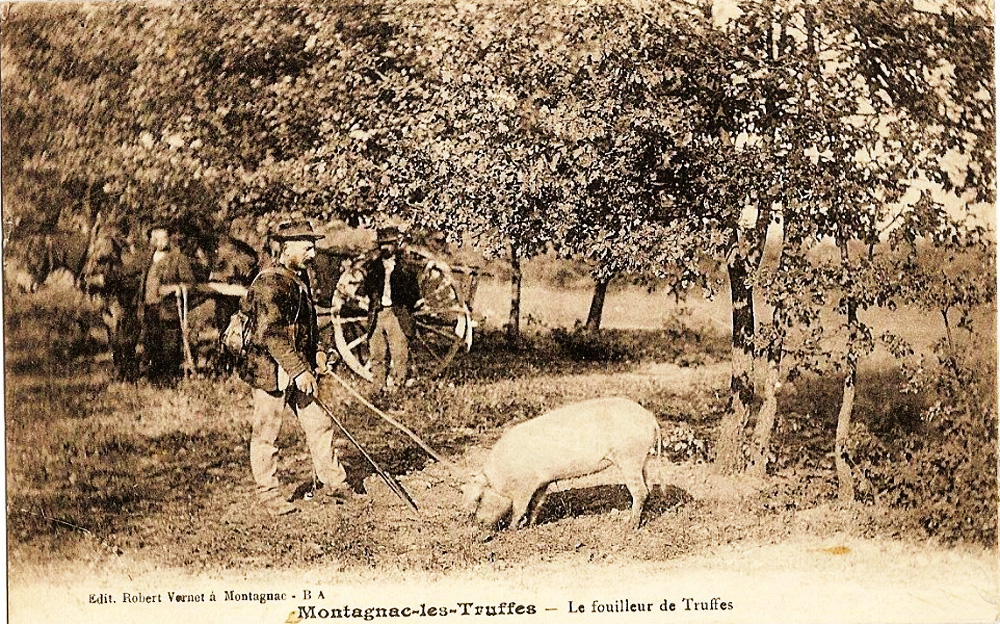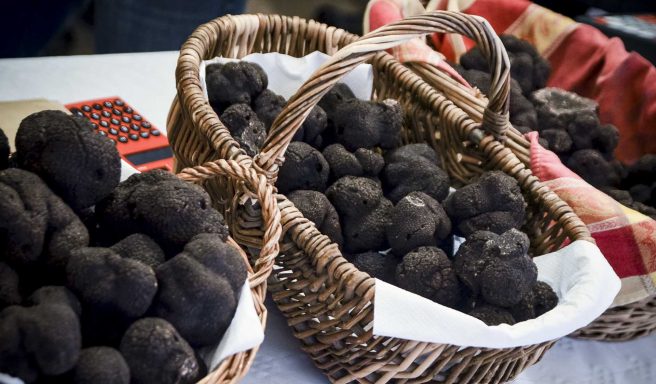Published the 02/23/2022 in Exploring the Region
When we talk about gastronomic luxury it is impossible not to mention the truffle, the famous mushroom recognized throughout the world for its finesse, its rich taste but also its rarity. But when we talk about truffles we often think of the Italian white truffle while here, in the region of New Aquitaine, we appreciate the black truffle of Périgord.

It is also called "black gold" or "black diamond" to underline the value of this mushroom for both foodies and producers. The black truffle is the tastiest of truffles with its incomparable smell of undergrowth, earth and humus and fine peppery taste.
The truffle is born underground at the foot of the trees after fruiting of a living mycelium in symbiosis with the roots. They are often found at the foot of truffle oaks along the Dordogne, preferably in limestone soils. The truffle is born in the spring, develops during the summer and ripens from November.
The Périgord black truffle is harvested from mid-November to mid-March in the truffle fields with the help of a truffle dog, a pig or a fly. Whichever method is used, it takes experience to spot the famous mushroom and patience to avoid picking it immature, tasteless and therefore worthless.

The best place to taste the black gold of Périgord is Sarlat market, during the truffle season from December to February. In particular, you can taste the famous "croustous", Périgord truffle tapas.
If you are on holiday in Périgord in mid-January, don't miss the Truffle Festival in Sarlat either. For a weekend, the mushroom is in the spotlight with cooking workshops, events and digging demonstrations. You can also learn how to easily identify it and how to buy it.
But do you know that truffle markets take place not only in Dordogne but also in Saint-Emilion and Jarnac? And a day in Cognac can very well be accompanied by a magnificent 100% truffle meal!

The truffle offers great culinary freedom and flavors dishes from the simplest to the most refined. Raw or lightly cooked, it goes well with sweet foods (potatoes, eggs, meat & fish, pasta & rice, vegetables) or fatty substances (butter, cream, oil) which easily capture its flavors.
It enhances both cold and hot dishes, but will develop more flavors on a hot dish. Nevertheless it is necessary to avoid long cooking (always below 80°) to preserve all its perfume. The black truffle can, for example, be the subject of a sauce (slowly infused in cream or in white butter) or reveal its most raw flavors by being tasted raw in thin strips added at the time to serve on a platter. Some will appreciate it as such, simply placed on a slice of toasted butter.
Whatever the truffle and its use, it is recommended to respect the right weight of the product in all recipes to ensure success:
.jpg)
You'd like to taste truffles or visit a producer or discover the secrets of production and hunting? Contact us!